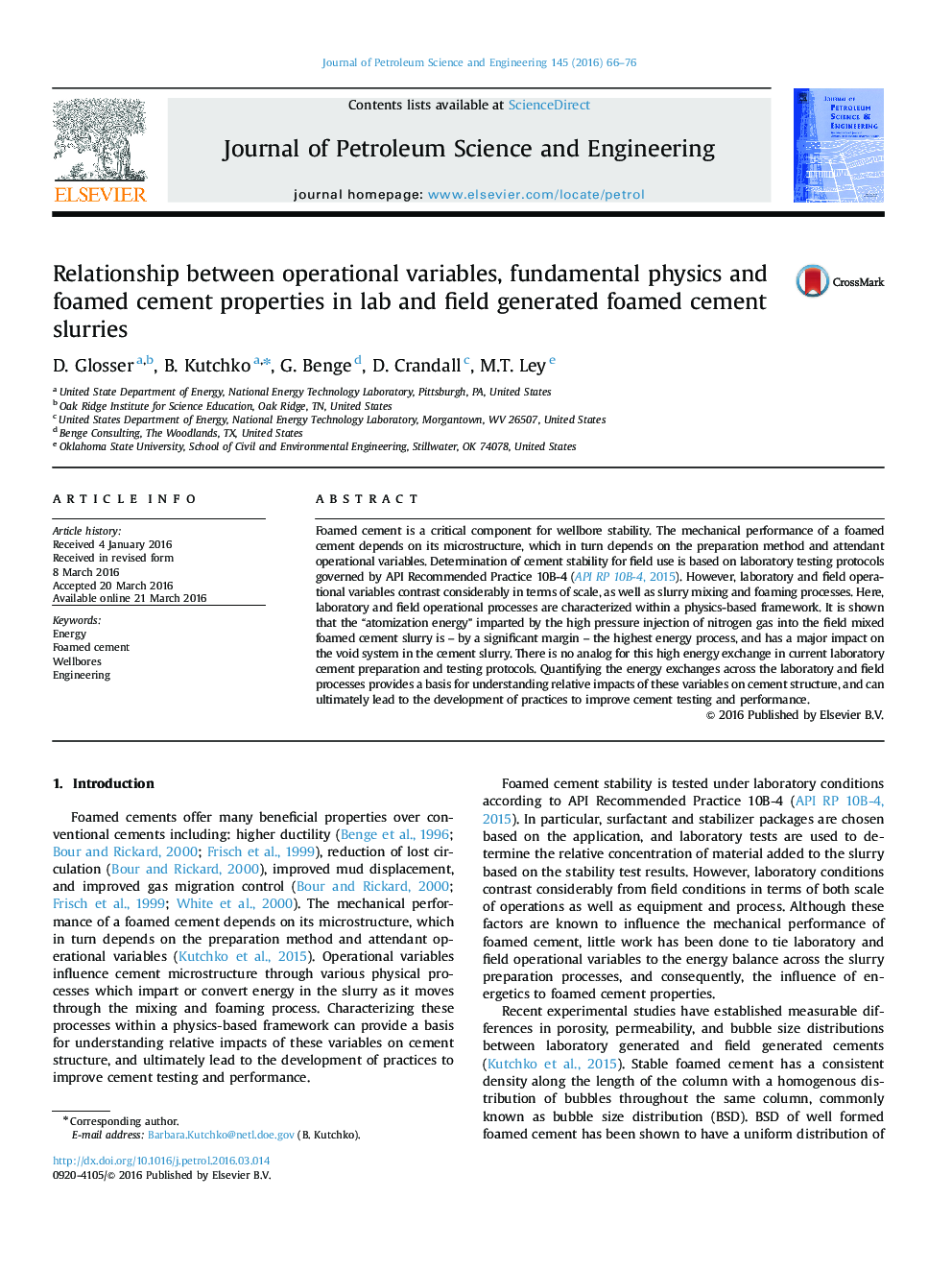| Article ID | Journal | Published Year | Pages | File Type |
|---|---|---|---|---|
| 8126063 | Journal of Petroleum Science and Engineering | 2016 | 11 Pages |
Abstract
Foamed cement is a critical component for wellbore stability. The mechanical performance of a foamed cement depends on its microstructure, which in turn depends on the preparation method and attendant operational variables. Determination of cement stability for field use is based on laboratory testing protocols governed by API Recommended Practice 10B-4 (API RP 10B-4, 2015). However, laboratory and field operational variables contrast considerably in terms of scale, as well as slurry mixing and foaming processes. Here, laboratory and field operational processes are characterized within a physics-based framework. It is shown that the “atomization energy” imparted by the high pressure injection of nitrogen gas into the field mixed foamed cement slurry is - by a significant margin - the highest energy process, and has a major impact on the void system in the cement slurry. There is no analog for this high energy exchange in current laboratory cement preparation and testing protocols. Quantifying the energy exchanges across the laboratory and field processes provides a basis for understanding relative impacts of these variables on cement structure, and can ultimately lead to the development of practices to improve cement testing and performance.
Keywords
Related Topics
Physical Sciences and Engineering
Earth and Planetary Sciences
Economic Geology
Authors
D. Glosser, B. Kutchko, G. Benge, D. Crandall, M.T. Ley,
